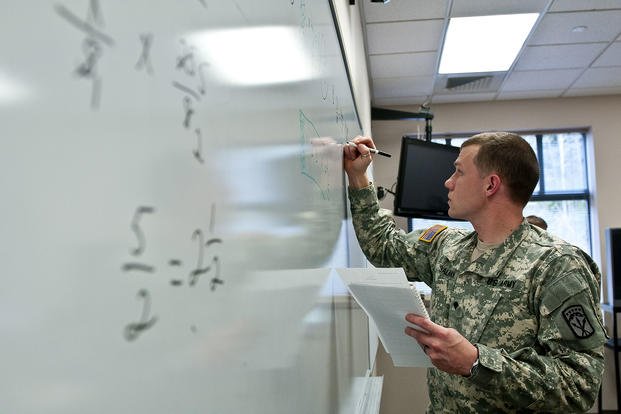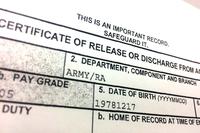The Armed Services Vocational Aptitude Battery (ASVAB) is a test for high school students taken when they are in 10th, 11th or 12th grade, but also available to anyone who is eligible for enlistment into the armed forces. You are also eligible to retake the test to get a higher score, if necessary. Although it isn't required to enter the U.S. military, it can give you a good idea of what military jobs and placements would be best for you. When taking the test, there are some things to keep in mind so that you can score the highest, based on your skill set, and are qualified to enlist.
Know the Test
Depending on where you take the test, it will either be a pencil-and-paper test or a computerized test. These vary differently in terms of what and how many questions are asked. Be sure you know which one you will be taking ahead of time.
Computerized ASVAB
If you are taking the ASVAB at a Military Entrance Processing Station (MEPS), you will take the test on a computer. Each section of the test is timed. The computerized ASVAB consists of questions concerning:
● 16 general science (9 minutes)
● 16 word knowledge (8 minutes)
● 16 assembling objects (16 minutes)
● 11 auto and shop information (7 minutes)
● 16 arithmetic reasoning (39 minutes)
● 16 mechanical comprehension (20 minutes)
● 11 paragraph comprehension (22 minutes)
● 16 electronics information (8 minutes)
● 16 mathematics knowledge (20 minutes)
Paper ASVAB
If you are taking the ASVAB test at a Military Entrance Test (MET) site, you more than likely will take the paper version, which is slightly different from the computerized version. Each section is timed. The paper ASVAB consists of these questions:
● 25 general science (11 minutes)
● 35 word knowledge (11 minutes)
● 25 assembling objects (15 minutes)
● 25 auto and shop information (11 minutes)
● 30 arithmetic reasoning (36 minutes)
● 25 mechanical comprehension (19 minutes)
● 15 paragraph comprehension (13 minutes)
● 20 electronics information (9 minutes)
● 25 mathematics knowledge (24 minutes)
Each section of the test is meant to evaluate your knowledge holistically and help you understand where you fit best in the military.
How to Study for the ASVAB
Though the test evaluates your current knowledge, you should study for it as much as you can before taking it. If you are going into the military, this test will determine your qualifications for certain jobs. So if you have your heart set on getting a specific job, make sure that you study and do well on sections of the test that are applicable to that job.
There are many study guides and books that you can pay for to help you study, as well as online options. Do your research to ensure you are using a study guide that is up to date and applicable to the test you will take. Study each section individually first, then go back over the sections with which you are having trouble.
Take a Practice Test
One of the best ways to test your knowledge is by taking practice tests. You can find practice tests here and many other websites online. When you take these practice tests, time yourself as if you were taking the actual test so that you know where you stand. A good strategy to use while taking the test is to skip questions that you don't know right away, then go back after you have finished the other questions.
Making a Good Guess
Sometimes you won't know the answer, and that's fine, but you should know when to make a good guess. Completely skipping the question will give you a zero no matter what, so you might as well take your chances. Most questions will be multiple choice, so you have a 25% chance of getting it right.
First, eliminate answers that you know for sure aren't correct. Then gauge the likelihood of the rest of the answers being right. Typically, you will be able to eliminate one or two more answers that are very close to having the same meaning. The more you can narrow down the possibility of the answers being correct, the greater likelihood you have of guessing the answer correctly.
Want to Know More About the Military?
Be sure to get the latest news about the military, as well as critical info about how to join and all the benefits of service. Subscribe to Military.com and receive customized updates delivered straight to your inbox.












